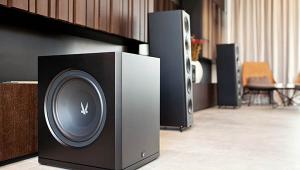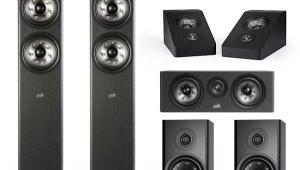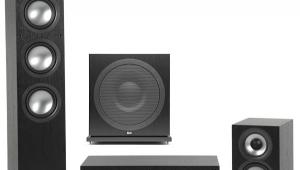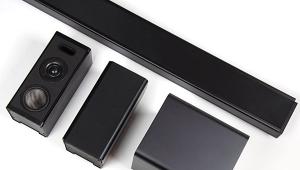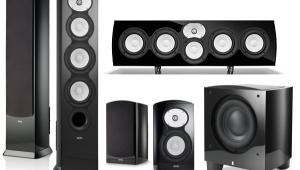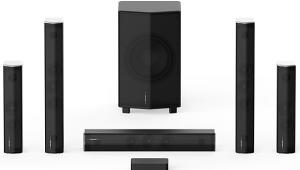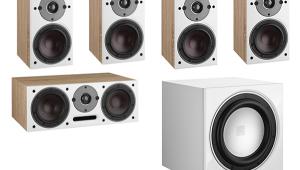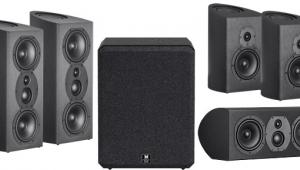Tekton Design Impact Monitor Theater System Review
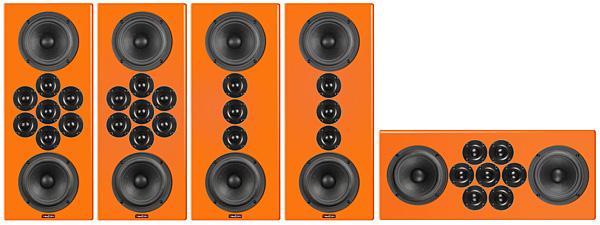
AT A GLANCE
Plus
Powerful, dynamic sound
Excellent value
Minus
No furniture-grade finish option
Large, bulky cabinets
THE VERDICT
Tekton’s Impact Monitor Theater system lives up to its name, with performance that reflects the unique priorities of its designer.
With A Phalanx of 38 drivers pointed directly at my ears, it was with some trepidation that I reached for the remote control to start listening with Tekton Design’s Impact Monitor Theater system. After all, I normally subscribe to the less-is-more approach to speaker design, where simpler usually means better. Tekton laughs at this type of thinking, however, throwing more drivers into its designs than there are plot twists in a David Lynch movie.
The first thing that grabs your attention when you encounter Tekton’s Impact Monitor is a circular array of seven tweeters that stare back at you like a giant fly’s eye. If, like me, you know just enough about speaker design to be dangerous, you may wonder if all of those tweeters will sonically interfere with each other. When I was a kid, my friend Ken built a speaker using a similar cluster of drivers, but that was only because he had a bunch of extra ones lying around and figured it would be a waste if he didn’t put them to work. The result sounded terrible, and that may be where my love of simplicity took hold.
Thankfully, Tekton’s Eric Alexander knows a lot more about designing good speakers than Ken did— there is plenty of careful decision-making plus decades of experience behind all those drivers used in the Impact Monitors.
When a bunch of tweeters are situated near each other, even small head movements can result in big differences in their combined frequency response, an effect known as comb filtering. Rather than seeing this as a problem that needs to be minimized, Alexander has harnessed its effects to control the way sound radiates from the Impact Monitor. Instead of feeding all seven drivers with an identical signal, they are divided into three groups with different high- frequency cutoff points. The center driver alone extends to the highest frequencies as a true tweeter, while the six drivers surrounding it act more like a concentric midrange radiator with carefully controlled directivity.
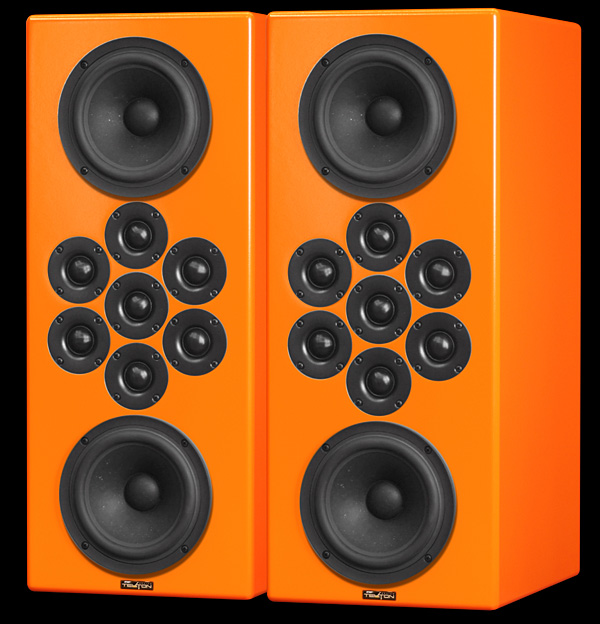
Alexander is so convinced of his approach that he received a U.S. patent covering his multi-driver array with overlap- ping frequency ranges. He explains that by using six small, lightweight drivers to do the job normally handled by a single, heavy midrange cone, he can match the moving mass of the drivers to the audio spectrum they cover. The result: a speaker with notable speed, slam, and detail-resolving capability.
Variations on a Theme
My review system consisted of five Impact Monitors in three different variations, with each optimized for a specific position in a 5.1-channel home theater rig. The Impact Monitor ($1,000 each) with a seven- tweeter array was used for the front left and right positions. A third Impact Monitor, this one flipped sideways with a driver array optimized for horizontal placement, served as the center channel. For surrounds, I used a simplified 3-tweeter version of the Impact Monitor ($775 each) that provides the wide lateral dispersion preferable for surround speakers.
All three speaker versions have a large port on the back, along with a single pair of unplated copper Cardas binding post connectors. On the bottom of each speaker are small rubber plugs pressed into threaded inserts. Size-wise, the Impact Monitors fit into a slightly awkward category: too bulky for a bookshelf, yet clearly too short to sit directly on the floor. I placed them on spiked 20-inch- high speaker stands, which put the center tweeter height close to ear-level.
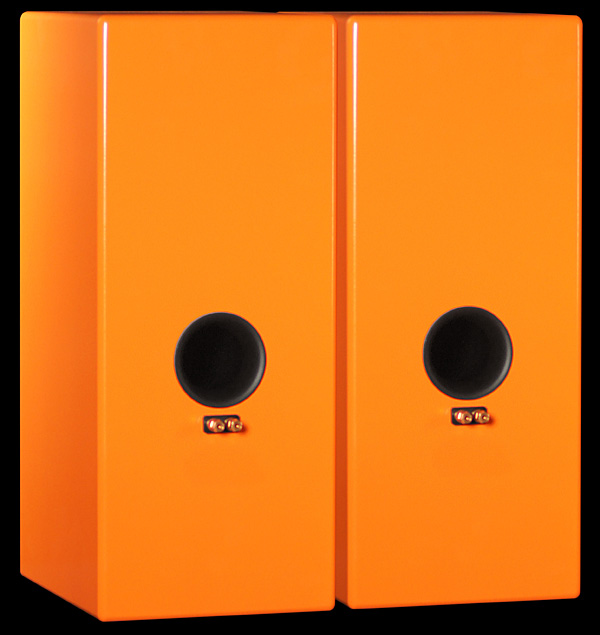
Tekton is known for offering high value, and there’s no doubt that you get a lot of speaker here for your money, especially considering that they are manufactured in Utah rather than somewhere in Asia. Most of the cost savings can be attributed to the simplicity of Tekton’s cabinetry. Square-corners and a basic painted finish give the speaker a rather severe look. Also, the lack of standard grilles might not sit well with design- conscious homeowners. The good news is that optional grilles are available for a modest cost, and the somber black of my review samples can be brightened up with piano gloss and metallic finishes at extra cost. But don’t mistake Tekton’s no-frills design for anything less than superb manufacturing. These are solid, hefty speakers of the kind that may leave your knuckles bruised if you do the knock-test.
Tekton’s sound-over-style approach can also be seen in the Brisance 12 subwoofer ($800) that I used to round out the system. When it comes to subs, there’s an old adage stating that there’s no replacement for displacement. With a large 12-inch driver mounted in a fairly massive box, the Brisance 12 fully embraces that philosophy. Power is provided by a 500-watt BASH plate amplifier, and there are both line- and speaker-level inputs and a bypassable crossover.

